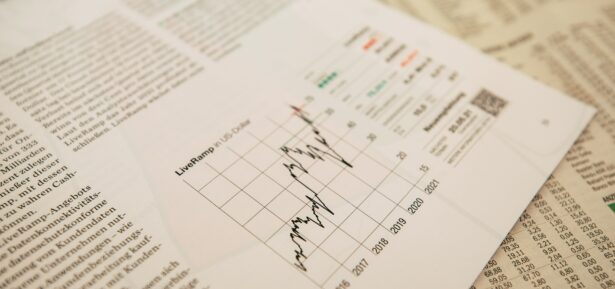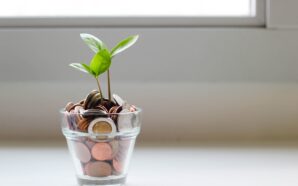

(Photo Source: ashbrookoutdoors.com)
A small tree that holds value better than gold
Did you know that bonsai trees could cost thousands of dollars and that they only go up in value? Here are some of the secrets that make bonsai trees so expensive.
At the 2012 international bonsai convention, one bonsai tree was on sale for 100 million yen which is roughly $924,000. There are also some trees that are considered priceless leaving many to ask, what makes a bonsai so expensive?
The art of bonsai consists of dwarfing a regular tree, creating a perfect miniature representation of nature in a small pot. The history of the bonsai tree originates in China in the sixth century with bonsais being featured in art from the Tang Dynasty in 706 CE (Common Era).
The grower restricts the growth of the tree through years of wiring, repotting, pruning, and grafting with plants needing to monitored daily along with often watering. A huge part of their value lies in the skills of the gardeners with some techniques taking years to master. If any errors are made in the process of growing a bonsai tree, it can result in the permanent ruining of the shape or kill a plant that’s been growing for centuries.
Some trees from 2020 94TH Kokufu Bonsai Exhibition, Part 2.#Bonsai #盆栽 #บอนไซ #분재 #бонсай #盆景 #Bonsaï #HagamosBonsai pic.twitter.com/om8Bc0NoE5
— bonsaimente (@bonsaimente) February 20, 2020
Bonsai trees are often twisted and bent into shape, then positioned around rocks. Some arrangements feature multiple bonsai trees in one pot that resembles a tiny forest.
Chiako Yamamoto is a fourth-generation bonsai master who lived in central Japan, creating the best-selling bonsais for 51 years. Yamamoto says growing plants require patience and some of her smallest bonsais can take years to create.
Chiako shows some of her smallest bonsai trees that are only a couple inches tall but took 15 to 25 years to grow. She says after the branches are done growing, nothing else changes but the bonsai is still evolving. The only way the bonsai evolves past this point is based on how she manages and loves it.
Chiako says bonsais are constantly unstable but she gives these unsteady trees her love saying even if she transplants the bonsai tree, it takes three years to create a new root and five years to change it. Bonsai tree gardening is unlike most forms of art since the idea of the final product changes as the tree evolves with gardeners changing their routine to best suit the plant.
The most expensive trees on the market can be up to over 800 years old and the supply of aged bonsai plants won’t increase anytime soon, making them incredibly valuable. A bonsai can live through two to three generations with families often passing down bonsai trees to increase their life span and ultimately the value.
As if plucked from the Serengeti, this #bonsai display is truly marvelous. Kudos to the artist. pic.twitter.com/L8LqjVbdcp
— Bonsai Creek (@BonsaiCreek) February 20, 2020
Chiako says that there are fewer bonsai businesses making it a difficult problem on passing down the bonsai tree to the next generation. Chiako’s modern-day bonsai collection was collected in the Meiji era and pieces are considered famous for 30 to 40 years old, but Chiako isn’t making any famous pieces at the moment.
The value isn’t all about the tree with other factors that play into the final cost including handmade tools and bonsai pots that can cost thousands of dollars alone. Another factor in value is the level of difficulty growing certain types of trees that requires certain growing techniques, increasing the price of the bonsai tree.
Every bonsai tree holds a unique value because no two are alike, making each tree truly one of a kind. The price evaluation of bonsai is very strict with some of the oldest bonsai trees losing value over the quality of the tree, no one will buy a bonsai tree without good evaluations.
-
Michael Saylor, a prominent figure in the world of cryptocurrency, has seen significant gains this week as the value...
-
The Office for National Statistics (ONS) released official figures on Wednesday, revealing that the United Kingdom posted a record...
-
As scrutiny intensifies, Fujitsu faces repercussions for its role in the Post Office scandal. The UK government has issued...
-
Tech Billionaire Proposes Renaming Wikipedia to ‘Dickipedia’ in Exchange for Record Donation In a recent social media spectacle, tech...
-
Urgent IMF Deal Needed to Prevent Pakistan’s Economic Collapse, Bloomberg Warns Bloomberg, a renowned US-based financial news service, has...
-
Federal student loan borrowers are in a tough situation as the pause on loan payments, implemented during the pandemic,...
-
Silicon Valley Bank’s Acquisition Fallout: Rising Unemployment and Uncertain Future First Citizens BancShares Inc., the new Silicon Valley Bank...
-
President Joe Biden and House Speaker Kevin McCarthy engaged in crucial negotiations on Monday to address the US government’s...
-
Secure your financial future with the 50/30/20 rule! As the cost of living continues to increase in 2023, managing...
-
Common treatments and medicines are becoming more expensive and harder to get. According to a new report released this...
-
A California appeals court overturned the challenge to Proposition 22. Back in 2020, California voters passed Proposition 22, which...
-
Tesla is looking to spark interest in its most expensive models. In the last several months, prominent electric vehicle...



















